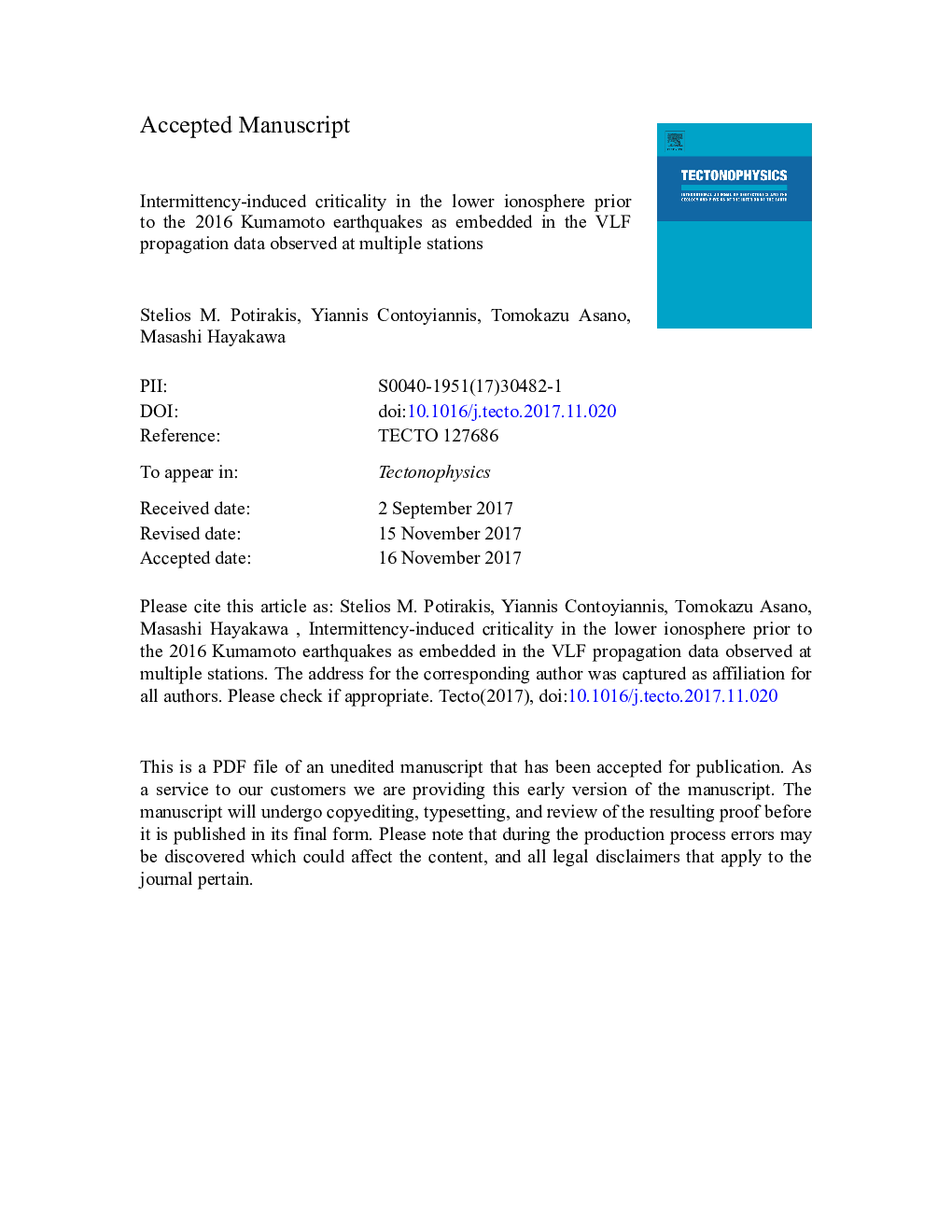| Article ID | Journal | Published Year | Pages | File Type |
|---|---|---|---|---|
| 8908834 | Tectonophysics | 2018 | 42 Pages |
Abstract
A network of 8 VLF/LF receivers has recently been established across Japan, receiving subionospheric signals from different transmitters located both in the same and other countries. The primary purpose of this network is to study disturbances in the VLF/LF propagation through the lower ionosphere in possible relation to earthquake (EQ) preparation processes. Ionospheric perturbations of possible seismic origin have long been investigated and considered very promising for short-term EQ prediction. The raw amplitude data on reception of the above-mentioned network, after being appropriately filtered, were analyzed by means of the method of critical fluctuations (MCF) in analogy to thermal critical systems. The MCF analysis of the VLF/LF propagation revealed that intermittency-induced criticality was reached in the lower ionosphere from ~Â 1Â week to 3Â days prior to the catastrophic 2016 Kumamoto EQs. These fault-type EQs occurred within a two-day period (14 April: MWÂ =Â 6.2 and MWÂ =Â 6.0, 15 April: MWÂ =Â 7.0) at shallow depths (~Â 10Â km) and very close epicenters, while the main event was as huge as the former 1995 Kobe EQ. MCF analysis results are compared to those by the conventional nighttime fluctuation method as well as to those by natural time analysis method obtained for the same dataset, and are found to exhibit remarkable consistency.
Keywords
Related Topics
Physical Sciences and Engineering
Earth and Planetary Sciences
Earth-Surface Processes
Authors
Stelios M. Potirakis, Yiannis Contoyiannis, Tomokazu Asano, Masashi Hayakawa,
